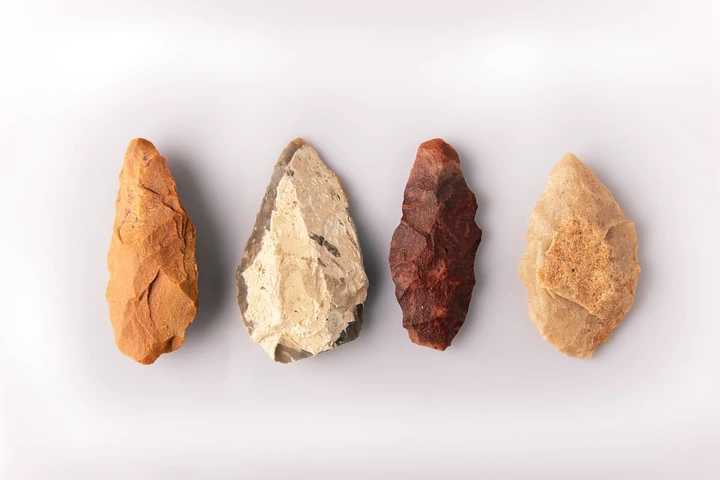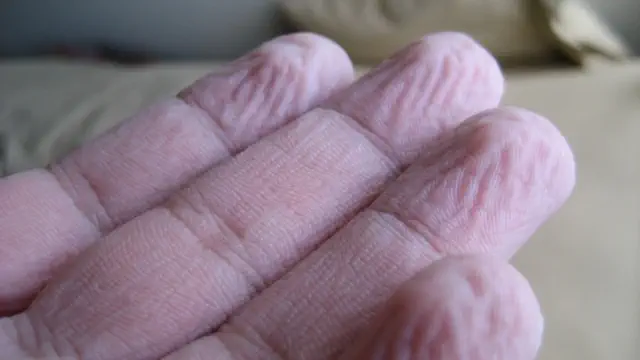To effectively engage with the simplest forms of technology, one needs to possess a certain level of intelligence.

View pictures in App save up to 80% data.
The human Stone Age was, undeniably, the first step on a journey towards the species total technological dominance – but it didn’t have to be. After all, pick a rock that’s too soft, or too wonky, and our ancestors may never have made it past “ape with aspirations”. So how did they manage to get it so right?
Recent research offers insights into this question, or at the very least, lays the groundwork for further exploration. By conducting direct experiments on different raw materials sourced from percussive tools at Melka Wakena, an archaeological site in the Ethiopian Highlands dating back 1.6 to 0.7 million years, scientists were able to deduce the qualities that rendered these materials beneficial to our prehistoric ancestors. They also examined the circumstances under which specific advantages were prioritized over others in their decision-making processes.
“Our research shows that the material properties of the stones – such as suitability, quality, and durability – were likely crucial factors in the selection process by early hominins,” explained Dr Eduardo Paixão, a researcher at the University of Algarve, Portugal, and study lead, in a translated statement.
Paixão remarked, “This indicates that they possessed a profound awareness of their surroundings and made intentional decisions.”
It wasn’t always as straightforward as you might think, either. For as primitive as we like to think of our Stone Age ancestors being, they understood the nuances of rock way better than we do (save for the odd geologist out there): “Our experimental results show that, while two types of rock (ignimbrite and glassy ignimbrite) appear similar to the naked eye, they behave considerably differently,” explains the paper.
The study highlights that glassy ignimbrite, sourced from a greater distance, posed some challenges in terms of convenience for use. However, it was noted to be “considerably tougher” and “the most uniform raw material available, exhibiting superior resistance.” Consequently, the softer variant of the rock, though more accessible, was overlooked in favor of “glassy ignimbrite, which was transported from afar as substantial flake blanks, specifically chosen for creating [large cutting tools].”
It’s not just the results that are important here. As the paper makes clear, a lot of what we’ve traditionally understood about Stone Age technology has been based on… well, vibes, more or less: “in many cases, […] inferences about [artefacts’] specific functions are based on preconceived assumptions about their size and morphology,” the paper explains.
Even those that have been systematically analyzed are still kind of fuzzy, it adds, since “Differences in the physical properties of rocks are often described and organized by researchers in distinct categories of ‘raw material quality’.
"It clarifies that, nonetheless, establishing and measuring this 'quality' is quite complex."
In that respect, the new paper – and the project it marks a beginning to – is undoubtedly remarkable. It’s perhaps the first study to analyze these ancient stone tools on their own terms: not only performing a post-hoc analysis of the artefacts, but replicating their original use. And it’s paid off: already, the researchers have noticed that some properties, previously assumed to be one of these mysterious “qualities” of the rock itself, are actually the result of the tool’s use over time.
Co-author Dr. João Marreiros stated, “The intentional choice of materials impacted the alterations observed on the tools' surfaces. This indicates that variations in archaeological discoveries are not merely coincidental.”
“These discoveries provide fresh insights into the technological advancements of early human civilizations,” remarked Paixão. “We intend to conduct additional studies to gain a deeper understanding of the intricate choices made by these primitive artisans.”
The study is published in the journal PLOS ONE.









